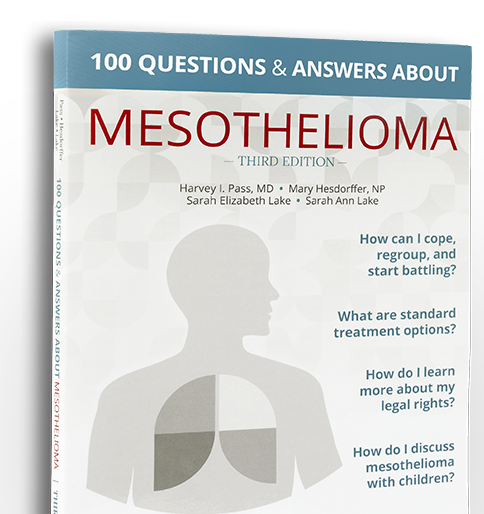At the time of a pleural mesothelioma diagnosis, your physician may assess your cancer in a process called staging, as guided by the standards of the Internal Mesothelioma Interest Group (IMIG) Staging System. This assessment is used to gain more insight into the location(s) and severity of your mesothelioma diagnosis. It may also be used as a tool for determining the appropriate treatment courses available to you depending on the stage of your mesothelioma. There are 4 stages of mesothelioma, as defined by the IMIG Staging System. Each stage is assigned telling qualities based on the locale and growth or spread (if any) of the mesothelioma cancer. Stage 1 is considered localized mesothelioma that has not yet metastasized to other tissues (the earliest stage with the most treatment options), while mesothelioma stages 2-4 are considered advanced at increasing levels, depending on how far the cancer has spread throughout the body and the gravity of the prognosis (with stage 4 being the latest stage and often the most minimal treatment options available).
Generally, the defining qualities of each stage under the IMIG Staging System rubric are defined as follows:
Stage 1 - The cancer is localized on one side of the chest with no metastasis having yet occurred. This is the earliest stage in the mesothelioma stage classification and often renders the most positive prognosis of all the stages with the most treatment options available.
Stage 2 - The cancer remains localized, although the tumor has grown somewhat from its origin. The cancer is not yet effecting the Lymphatic System.
Stage 3 - The cancer remains localized, although the tumor has now metastasized, consequently effecting the lymph nodes and other surrounding tissues and organs.
Stage 4 - The cancer has now spread to the side of the chest opposite of its origination point and has substantially metastasized to other organs and tissues throughout the body. This is considered the latest stage classification.
Once the stage of mesothelioma has been determined, your individual diagnosis will then be further diagnosed by a combination of letters and numbers that are specific to your mesothelioma and according to the TNM system. These additional notations can include information regarding the size of the tumor itself (denoted by the letter T), whether the cancer has begun to effect the lymph nodes either inside or outside of the effected lung (denoted by the letter N), and whether the cancer has begun metastasis, or the spreading to other tissues and organs within the body (denoted by the letter M). An example of a staging diagnosis once all factors have been determined using the additional letter scale could read “Stage 1- T1a N0 (IA).”
Because diagnoses of pericardial and peritoneal mesothelioma are so rare, there is no generally accepted staging system in place for these types of mesothelioma. Instead, physicians will use similar guidelines and information regarding the unique location, size, and the metastatic rate of the patient's cancer to determine the best treatment course of action and prognosis in the situation of a pericardial or peritoneal mesothelioma diagnosis.
Request a Free Book on Mesothelioma
If you or a loved one is interested in learning more about the mesothelioma staging process, complete the form below to request a free mesothelioma book of answers or contact us to speak with a medical specialist who can discuss your options and make a referral to a qualified physician.




